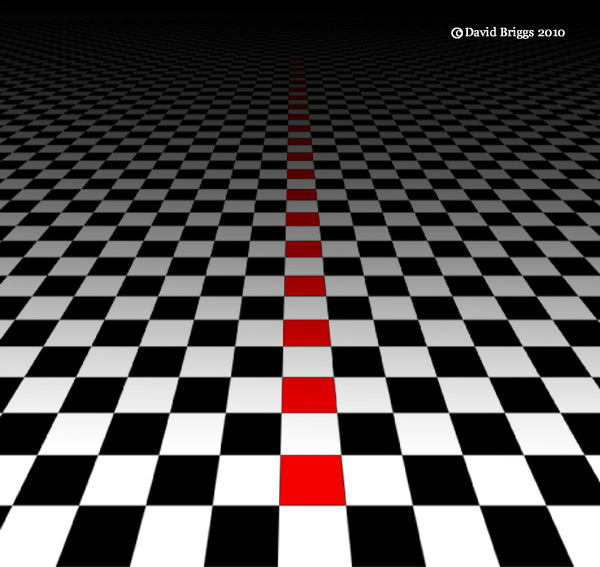But there is literally a phone/big speakers parallel isn't there? I could have asked "Would you rather listen to a symphony on a phone speaker or some stereo speakers in your living room?". It isn't just a question of volume.
But obviously my question is not between a gear that is very cheap and a graded one. But comparing two similar graded setups (because comparing two lower makes non sense).
Would a 4K TV X make differences between another 4K TV Y?
In terms of what you perceive. Because at some points I believe you are not watching "more" details anymore, but changing the distortion you can't (in any case) remove.
In the image you show, geometric distortion would change it: whereas at the moment I could look at it and imagine it was a floor, or a chessboard (that's the kind of thing art is supposed to do..?), geometric distortion would change the 'meaning' that I might ascribe to it - I might begin to see it as a mountain range or the seabed. You could say that the new 'meaning' is just as valid as the old one, so anything goes: a $100,000 monochrome cathode ray tubed television set that adds euphonic geometric distortion is better than the 'clinical' super-linear $1000 OLED version.
Again, you are confronting lower quality setups with higher one. No one
decent screen will distort geometric. But for this property, after some points, every TV would be ok. i.e. you will totally remove distortion. As for pitch, melody or harmony in music.
The problem is on texture/color: can you confirm that till some points you can get distortion, than, over that line, EVERY TV you would use (which own higher technics parameters) keep the same "color"? As keeping the same geometric over some quality gears? I don't think so...
This is what the whole thread is about.
That's why I talked about color constancy (timbre) and not shape/size constancy. Those are easier to keep.
Anyway, I'd like to get your answer about my question of the same "red color" in two different viewing. What's your idea about this?

